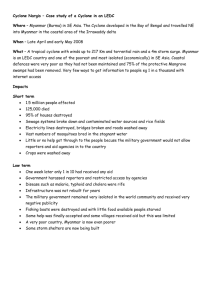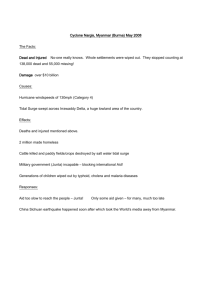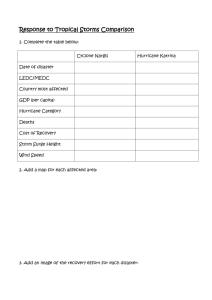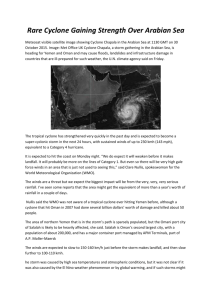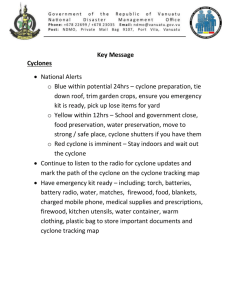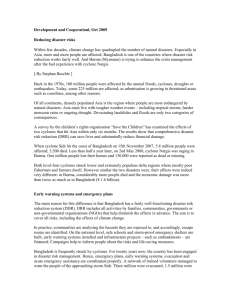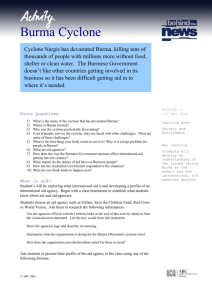The hidden horrors of Cyclone Nargis
advertisement
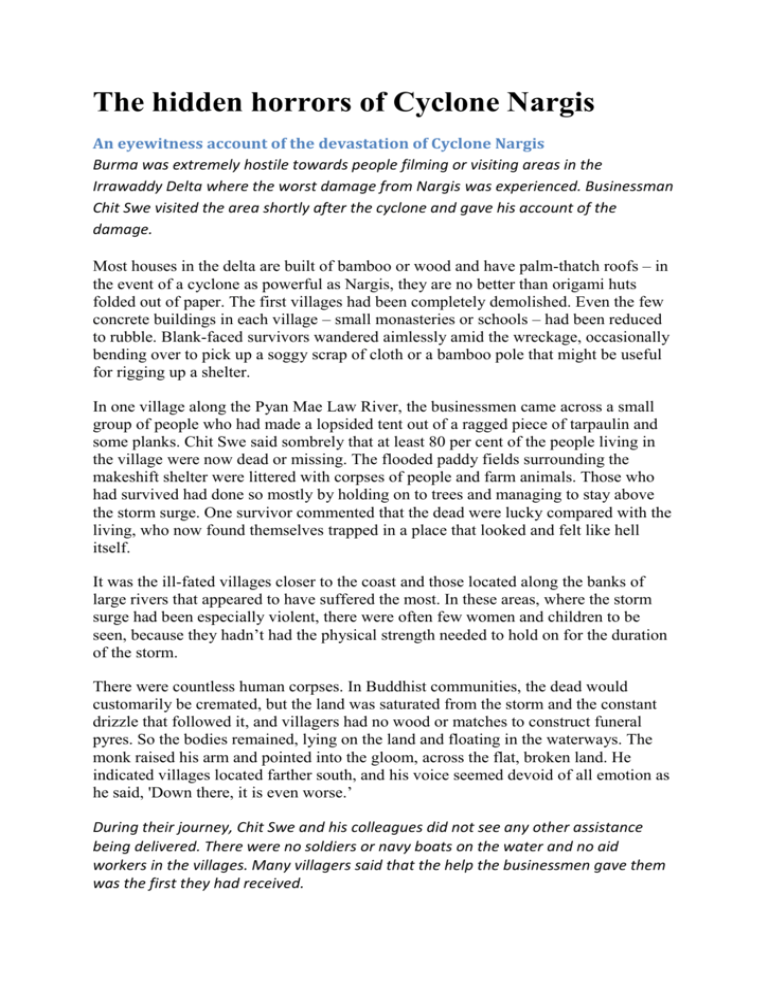
The hidden horrors of Cyclone Nargis An eyewitness account of the devastation of Cyclone Nargis Burma was extremely hostile towards people filming or visiting areas in the Irrawaddy Delta where the worst damage from Nargis was experienced. Businessman Chit Swe visited the area shortly after the cyclone and gave his account of the damage. Most houses in the delta are built of bamboo or wood and have palm-thatch roofs – in the event of a cyclone as powerful as Nargis, they are no better than origami huts folded out of paper. The first villages had been completely demolished. Even the few concrete buildings in each village – small monasteries or schools – had been reduced to rubble. Blank-faced survivors wandered aimlessly amid the wreckage, occasionally bending over to pick up a soggy scrap of cloth or a bamboo pole that might be useful for rigging up a shelter. In one village along the Pyan Mae Law River, the businessmen came across a small group of people who had made a lopsided tent out of a ragged piece of tarpaulin and some planks. Chit Swe said sombrely that at least 80 per cent of the people living in the village were now dead or missing. The flooded paddy fields surrounding the makeshift shelter were littered with corpses of people and farm animals. Those who had survived had done so mostly by holding on to trees and managing to stay above the storm surge. One survivor commented that the dead were lucky compared with the living, who now found themselves trapped in a place that looked and felt like hell itself. It was the ill-fated villages closer to the coast and those located along the banks of large rivers that appeared to have suffered the most. In these areas, where the storm surge had been especially violent, there were often few women and children to be seen, because they hadn’t had the physical strength needed to hold on for the duration of the storm. There were countless human corpses. In Buddhist communities, the dead would customarily be cremated, but the land was saturated from the storm and the constant drizzle that followed it, and villagers had no wood or matches to construct funeral pyres. So the bodies remained, lying on the land and floating in the waterways. The monk raised his arm and pointed into the gloom, across the flat, broken land. He indicated villages located farther south, and his voice seemed devoid of all emotion as he said, 'Down there, it is even worse.’ During their journey, Chit Swe and his colleagues did not see any other assistance being delivered. There were no soldiers or navy boats on the water and no aid workers in the villages. Many villagers said that the help the businessmen gave them was the first they had received. How the death and destruction wrought by Cyclone Nargis in Burma was largely hidden from world view A few days after Cyclone Nargis made landfall at the south-western tip of Burma’s Irrawaddy Delta on Friday May 2, 2008, Nasa released a set of before and after pictures taken by satellite. The satellite image taken shortly after the cyclone depicted a landscape that had been changed dramatically. These images showed that Cyclone Nargis had caused substantial damage. Yet, in those first days after the cyclone, hardly any news emerged from Burma. The storm severed phone lines and electricity cables, and it was almost impossible to get information from inside this secret country. Over the following week, news began to trickle out as generators were activated and electricity and phone lines were restored to some parts of Rangoon. Photographs of the city looked as if they had been taken in the aftermath of a massive explosion. Roads were blocked by fallen trees. Cars had been crushed by logs and telephone poles. Cement walls had caved in and pavements were cracked open. The destruction in the city was catastrophic, but it soon became apparent that what had happened in Rangoon was nothing compared with the devastation of the Irrawaddy Delta. Within a couple of days, the Burmese regime announced on state television that as many as 10,000 people could have been killed. The next day an official death toll was released: more than 22,400 people declared dead and at least 41,000 missing. But this was far below the final death toll of 138,366. From these initial snatches of information, it was clear that Cyclone Nargis had been a disaster of epic proportions. In the delta, many hundreds of thousands were trying to survive without food, water or shelter. As the scale of the disaster became apparent, foreign governments offered aid and assistance. Astoundingly, the Burmese government turned them down. In neighbouring Thailand, the US government had loaded a cargo plane with lifesaving relief supplies that would have taken just under an hour to reach Burma, but the aircraft was not given clearance to land at Rangoon’s airport. The United Nations World Food Programme had three planes loaded with vitamin-fortified biscuits ready to fly in from Bangladesh, Thailand and Dubai. These also were denied clearance. A flight from Qatar carrying relief materials and aid workers managed to land at Rangoon but was forced to take off again without unloading any of its contents. As international emergency response mechanisms kicked into action, UN staff and aid workers experienced in disaster response were mobilised from around the world. Few were granted visas to enter Burma.

